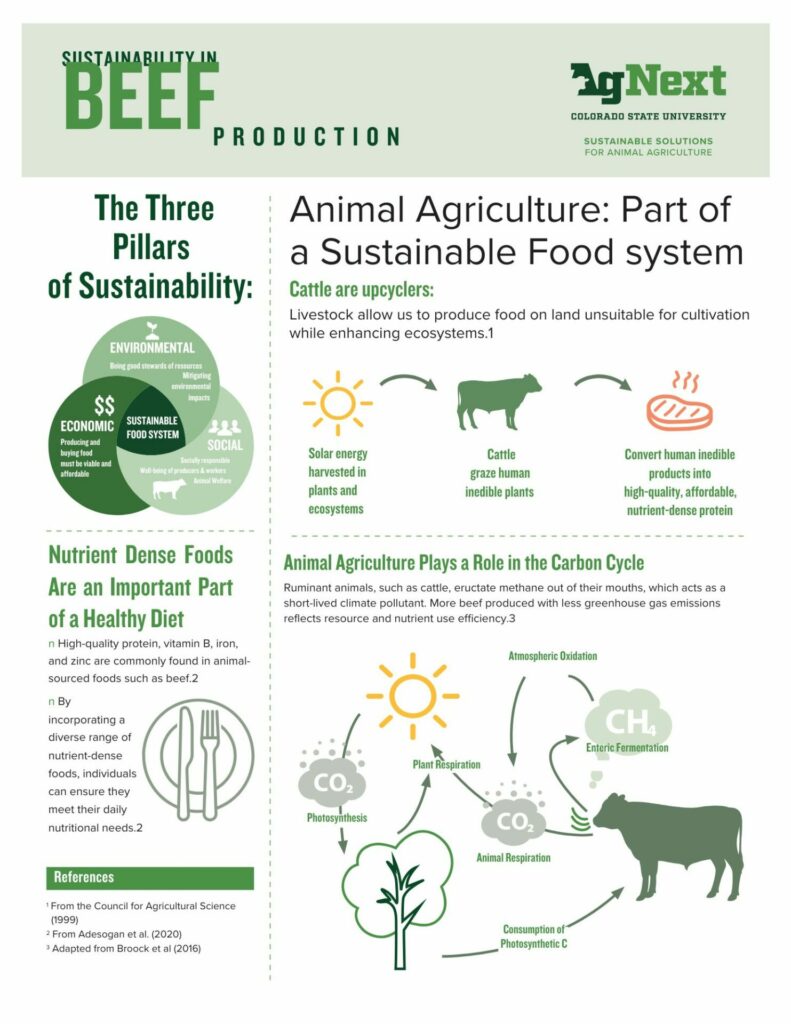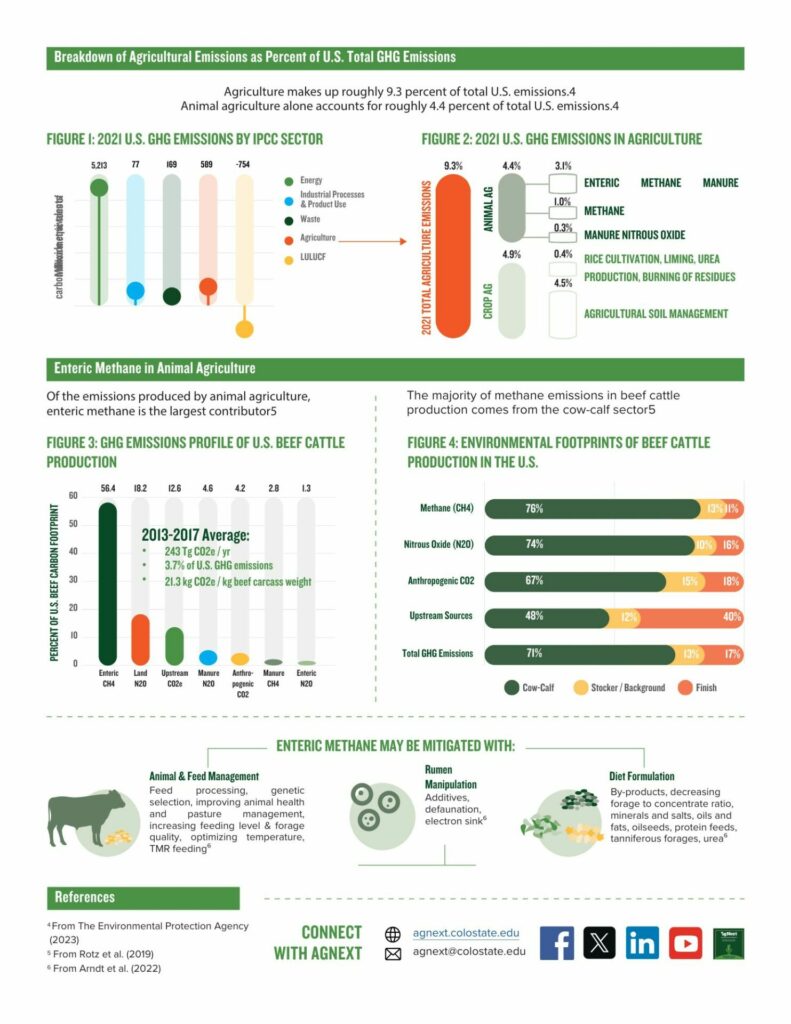Sustainability in Beef Production
The expert team at AgNext at Colorado State University have worked to develop this Beef Sustainability Fact Sheet to summarize and provide a clear understanding of the relationship between beef production and sustainability. This fact sheet discusses the three pillars of sustainability broadly and explains how each of the pillars plays a critical role in a sustainable system. Additionally, the document visualizes the role of cattle in promoting a healthy food system and underscores the importance of beef as part of a healthy diet. This fact sheet utilizes data from the Intergovernmental Panel on Climate Change (IPCC) to demonstrate that animal agriculture contributes less than five percent of total greenhouse gas emissions in the United States, with enteric methane, a byproduct of cattle production, being the primary contributor.
AgNext, as a research collaborative, is focused on finding sustainable solutions for animal agriculture with a particular emphasis on studying ways to reduce enteric methane in animal agriculture. Our expert team, research capabilities, and facilities enables our team to be the leading group studying sustainability and animal agriculture. The AgNext team intends for this fact sheet to be available for individuals to have a more holistic understanding of sustainability and animal agriculture based on fact-based information.


References:
Adesogan, A. T., Havelaar, A. H., McKune, S. L., Eilittä, M., & Dahl, G. E. (2020). Animal source foods: sustainability problem or malnutrition and sustainability solution? Perspective matters. Global Food Security, 25, 100325. https://doi.org/10.1016/j.gfs.2019.100325
Arndt, C., Hristov, A. N., Price, W. J., McClelland, S. C., Pelaez, A. M., Cueva, S. F., Oh, J., Dijkstra, A., Bannink, A., Bayat A. R., Crompton, L. A., Eugène, M. A., Enahoro, D., Kebreab, E. Kreuzer, M., McGee, M., Martin, C., Newbold, C. J., Reynolds, C. K., Schwarm, A., Shingfield, K. J., Veneman, J. B., Yáñez-Ruiz, D. R., & Yu, Z. (2022). Full adoption of the most effective strategies to mitigate methane emissions by ruminants can help meet the 1.5 C target by 2030 but not 2050. Proceedings of the National Academy of Sciences, 119(20), e2111294119. https://doi.org/10.1073/pnas.2111294119
Broocks, A., Andreini, E. Place, S., Rolf, M. (2016) How does carbon sequestration affect the sustainability of beef? Oklahoma State University. https://www.beefresearch.org/Media/BeefResearch/Docs/tqa-carbon-sequestration_10-07-2020-80.pdf
Council for Agricultural Science. (1999). Animal agriculture and global food supply (Vol. 135). Council for Agricultural Science & Technology (Cast). https://www.cast-science.org/wp-content/uploads/1999/07/CAST_R135_Animal-Agriculture-and-Global-Food-Supply.pdf
EPA (2023). Inventory of U.S. Greenhouse Gas Emissions and Sinks: 1990-2021. U.S. Environmental Protection Agency, EPA 430-R-23-002. https://www.epa.gov/ghgemissions/inventory-us-greenhouse-gas-emissions-and-sinks-1990-2021
Rotz, C. A., Asem-Hiablie, S., Place, S., & Thoma, G. (2019). Environmental footprints of beef cattle production in the United States. Agricultural systems, 169, 1-13. https://doi.org/10.1016/j.agsy.2018.11.005
Von Keyserlingk, M. A. G., Martin, N. P., Kebreab, E., Knowlton, K. F., Grant, R. J., Stephenson, M., Sniffen, C. J., Harner III, J. P., Wright, A. D., & Smith, S. I. (2013). Invited review: Sustainability of the US dairy industry. Journal of dairy science, 96(9), 5405-5425. https://doi.org/10.3168/jds.2012-6354
